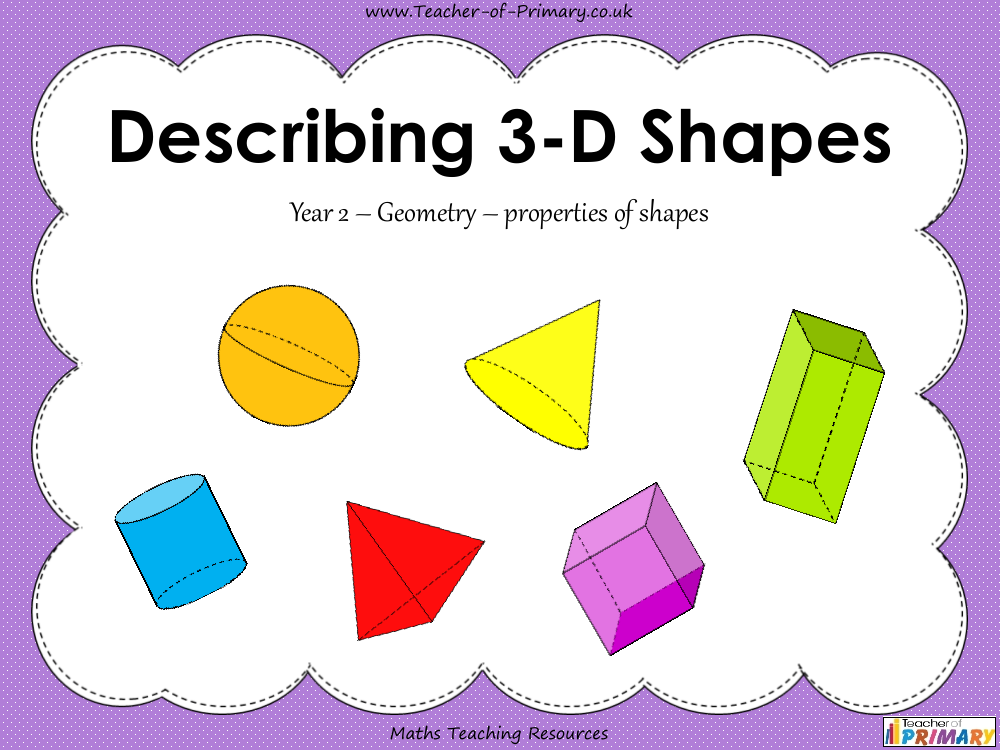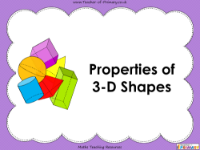Describing 3-D Shapes - PowerPoint

Maths Resource Description
In a Year 2 geometry lesson, students are introduced to the world of three-dimensional shapes. They learn that unlike flat 2-D shapes, 3-D shapes have thickness, making them solid objects that can be held and observed from different angles. The lesson focuses on identifying and describing these shapes by examining their distinct properties. Key terms such as 'faces', 'edges', and 'vertices' are used to articulate the features of various 3-D shapes. For example, a face refers to a flat or curved surface of a 3-D shape, and students learn to count the number of faces to describe the shape, as with a cube which has six faces.
As the lesson progresses, students delve deeper into the characteristics of 3-D shapes. They discover that an edge is where two faces meet, and a vertex is a corner where edges converge. A cube, for instance, is described as having 12 edges and 8 vertices. The lesson encourages students to engage with a variety of shapes such as cones, cuboids, spheres, cylinders, and square-based pyramids, counting their faces, edges, and vertices to build a vivid understanding of each shape’s structure. Through this hands-on approach, students become adept at recognising and describing the fundamental aspects of 3-D shapes, an essential skill in the study of geometry.

